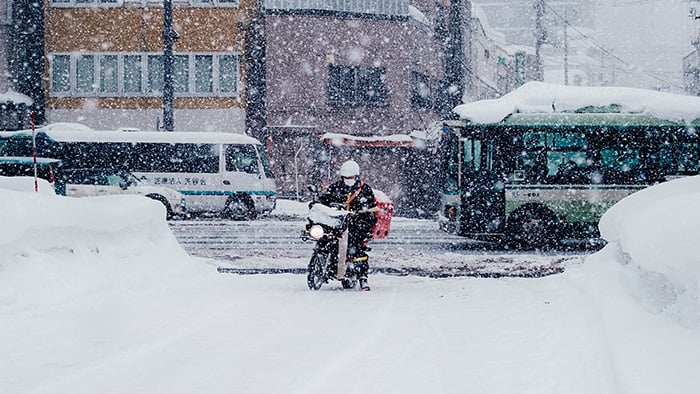Avoiding the Peril: Effective Strategies to Prevent Death Wobble in Motorcycles

The death wobble, as daunting as it sounds, is a common issue faced by many riders worldwide. It may happen when you least expect it – during a smooth ride on a sunny day or a high-speed chase on the freeway. The motorcycle begins to shake violently, your heart races, and in the blink of an eye, the situation can turn perilous. The occurrence of death wobble in motorcycles is not arbitrary. Various factors contribute to this unsettling event, and understanding these can be key in preventing a death wobble. As a rider, it is crucial to be aware of this phenomenon, the mechanics behind it, and effective strategies to prevent it.
What is Death Wobble?

The ‘death wobble’ on a motorcycle is a dangerous occurrence where the front wheel loses its ability to maintain a straight line of motion. This event is characterized by violent shaking of the front tire and handlebars, leading to instability and potentially resulting in a crash. Aggressive acceleration, performing wheelies, worn-out bearings, uneven tire wear, incorrect tire pressure, and tire misalignment are some of the common causes. It’s crucial to address these causes and maintain regular inspections to prevent the wobble and ensure a safe ride.
In scientific terms death wobble can be linked to the physics principle of resonance. Resonance occurs when an object’s natural frequency matches the frequency of an external force, leading to an increase in oscillation amplitude. When a motorcycle is in motion, the front wheel’s natural frequency might coincide with the frequency of an external force such as a bump or groove in the road. This can initiate a wobble. If not controlled, the wobble can amplify due to the gyroscopic effect and become a ‘death wobble’ – an uncontrollable oscillation of the front wheel and handlebars.
The eigenmodes, wobble and weave, describe this phenomenon. The wobble mode involves the rotation of the front assembly about the steering axis, while the weave mode involves the entire bike, including the rider. The wobble frequency is typically higher than the weave frequency, making it more noticeable and potentially dangerous.
Recognizing Signs of an Impending Death Wobble

Recognizing the signs of an impending death wobble is crucial for every rider. The initial symptoms can include a light shaking or vibration in the handlebars, usually occurring at specific speeds. This vibration can intensify as the speed increases, eventually leading to a full-blown death wobble.
Understanding these early signs can give you a valuable window of opportunity to react and potentially prevent a dangerous situation. Therefore, it’s essential to maintain an acute sense of awareness while riding, keeping a keen eye on the motorcycle’s behavior and the road conditions.
How to Respond
Knowing what to do when you get speed wobbles on a motorcycle can be the difference between a close call and a serious accident. The first instinct might be to panic and slam on the brakes, but this can exacerbate the situation. Instead, experts advise gradually closing the throttle to reduce speed and stabilizing the motorcycle by gripping the tank with your knees.
It’s also crucial not to resist the wobble but let the motorcycle correct itself. Trying to fight the wobble can make it worse. Remember, staying calm and in control is paramount. Your actions in these critical moments can significantly influence the outcome.
Expert Techniques and Tips

Knowing how to stop speed wobble can be a lifesaver in a critical situation. As mentioned earlier, the first step is to remain calm and avoid abrupt maneuvers. Gradually closing the throttle and gripping the tank with your knees can help stabilize the motorcycle.
Additionally, shifting your weight towards the rear can help reduce the oscillation. Some experts also suggest lightly applying the rear brake to help stabilize the motorcycle. Remember, each situation is unique, so what works in one situation might not work in another. The key is to stay calm, assess the situation, and act accordingly.
| Aspect | Description |
|---|---|
| Regular Maintenance | Proper maintenance is key to preventing many issues, including death wobble. Regularly check and maintain your motorcycle’s tires, suspension, steering components, and wheel bearings. Ensure that all parts are in good working condition. |
| Tire Inspection | Ensure that your tires are properly inflated and have adequate tread depth. Worn or unevenly worn tires can contribute to instability. Make sure the wheels are balanced, and the rims are not bent or damaged. |
| Proper Wheel Alignment | Incorrect wheel alignment can lead to wobbling. Ensure that the wheels are aligned according to the manufacturer’s specifications. Misaligned wheels can be a common cause of death wobble. |
| Suspension Setup | Adjust the suspension settings according to your weight and riding style. Correct suspension setup can improve stability. Consult your motorcycle’s manual for guidance on suspension adjustments. |
| Steering Dampers | Consider installing a steering damper. These devices help absorb and reduce unwanted handlebar movement, which can help prevent or minimize wobble. Make sure it’s properly adjusted. |
| Proper Riding Technique | Maintain a relaxed grip on the handlebars. A death grip can exacerbate wobbling. Keep your arms slightly bent, allowing the bike to move naturally beneath you. Also, avoid sudden and abrupt inputs to the controls. |
| Weight Distribution | Ensure that your weight is evenly distributed on the motorcycle. An imbalance can contribute to instability. Also, avoid carrying excessive loads or passengers beyond the motorcycle’s capacity. |
| Check for Loose Nuts and Bolts | Regularly inspect and tighten all bolts, nuts and fasteners on your motorcycle, including those on the handlebars, forks, and frame. |
| Smooth Riding | Be smooth with your throttle, brake, and steering inputs. Abrupt or jerky movements can trigger wobbling. Gradual and controlled actions are key to maintaining stability. |
| Avoid Road Hazards | Be cautious when encountering potholes, bumps, and uneven road surfaces. Slow down and use your body to absorb shocks when necessary. |
| Professional Inspection | If you experience a death wobble or suspect an issue with your motorcycle’s handling, consult a professional mechanic or motorcycle technician. They can diagnose and address any underlying problems. |
| Upgraded Components | In some cases, upgrading certain components, such as the suspension or steering damper, can improve stability and reduce the risk of death wobble. |
The death wobble motorcycle phenomenon is indeed a daunting experience for any rider. However, with proper understanding, preventive measures, and response strategies, it’s something that can be effectively managed. Remember, a well-maintained motorcycle and a mindful rider are the best defense against a death wobble. Ride safe, ride smart, and enjoy the thrill of the journey fearlessly.
So, as you rev up your engines for the next ride, remember these tips and strategies to ensure a smooth and safe journey. Embrace the adventure, but never compromise on safety.
- Winter Riding Pants Motorcycle - February 25, 2024
- Europe Motorcycle Road Trips - December 3, 2023
- Motorcycle Slang and Terminology - November 28, 2023




